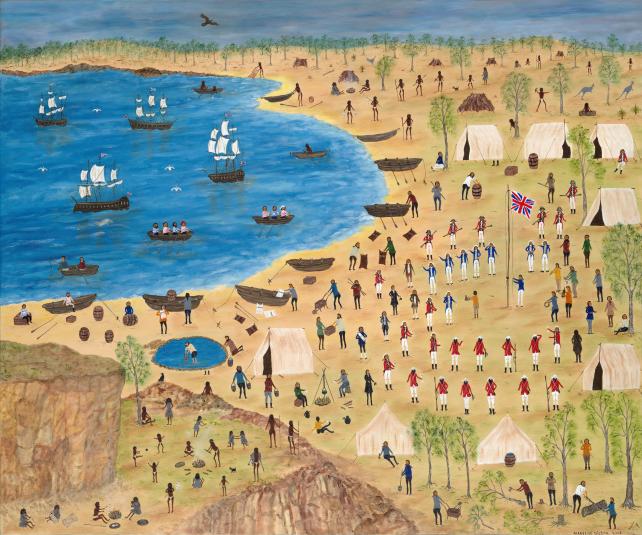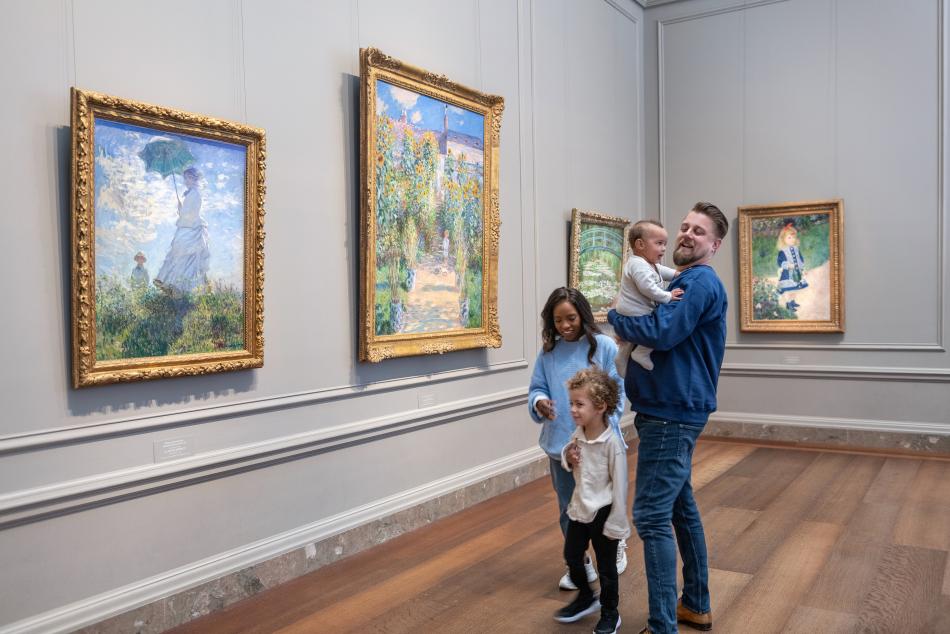Marlene Gilson (Wathaurong, born 1944) creates multi-figure paintings that seek to reclaim and recontextual the representation of historical events. Inspired by dollhouses, Indian miniature paintings, and illustrations on biscuit tins, Gilson meticulously renders theatrical, rich narratives that unfold across the canvas. Learning her Wathaurung history from her grandmother, Gilson began painting while recovering from an illness. She privileges stories that relate to her Ancestral lands near Naarm/Melbourne in Victoria. Often including her two totems, Bunjil the Eagle and Waa the Crow, Gilson’s paintings both reconfigure historical narratives and display her spiritual connection to Country.
Alick Tipoti (Kala Lagaw Ya, born 1975) is a renowned visual and performance artist, community leader, linguist, and regional advocate from Badu Island in Zenadth Kes (Torres Strait). His Elders named him Zugub, meaning Spiritual Ancestor, due to the spiritual encounters he experiences through his art. Tipoti’s contemporary artistic techniques are informed by spiritual patterns revealed to him by his Ancestors. These are left through oral histories, held within language and the environment and through observing cultural artefacts held in collecting institutions. His works use complex background designs, disguised among ritual objects and land and sea creatures. Using these representations, Tipoti reclaims the cultural history of his people and asserts their deep links to their marine environment. His approach to creating new work is based on not exploiting cultural information, as certain information remains sacred only to Zenadth Kes people. As a custodian and cultural ambassador, his innate desire to keep his cultural practices alive is at the heart of all his work.






